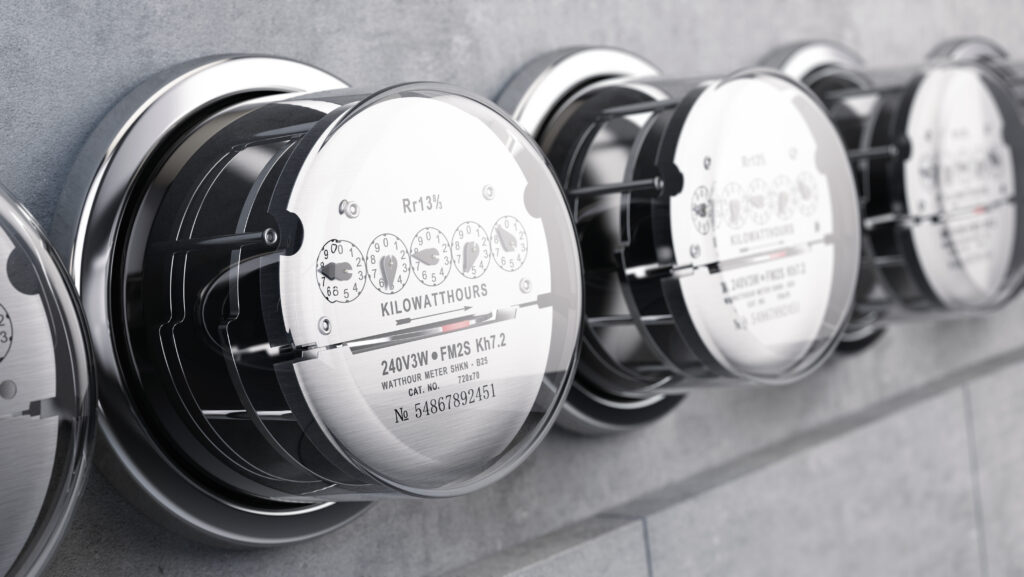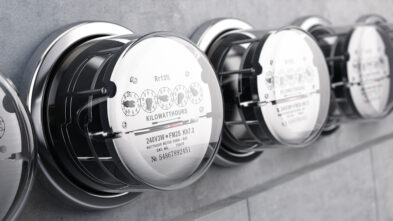Last week, we hosted a Webinar on Automating the Way you Manage Submeter Reading and Billing. The Webinar was moderated by Genea’s VP of Sales, Robert Vail and featured three Submeter Reading and Billing Experts, Brian Haine, Paul Marcoux and Laura Mullins.
Rob kicked off the webinar with a brief overview of Genea and our cloud-based software solutions for commercial real estate buildings.
Brian Haine, Genea’s Director of Technical Services, covered the basics of submeters including the different types, best practices for purchasing and installing the right submeter for your building, the life expectancy of meters and how to collect meter reads.
Paul Marcoux, Director of Submeter Billing Operations at Genea, then dug a little deeper into what to do once you have collected those meter reads. He provided a comprehensive overview on how to accurately analyze utility bills, how to precisely bill for submeter usage, and then addressed mistakes commonly made when taking submeter reads.
The last portion of the webinar featured Genea’s Senior Submeter Billing Consultant, Laura Mullins. Laura previously held the position of CEO and President at Moylan Energy Management for over 20 years prior to Genea acquiring Moylan in July of 2019. Laura walks through the different components of a utility bill and how to make sure you understand it, utility allocation and how to correctly billback utility usage and utility resale to your tenants (in certain markets).
We have broken down the webinar into three blog posts, each one focusing on the key takeaways from each speaker. Part one is a detailed review of Brian’s portion on why you should submeter your building.
So, why should you submeter your building? This is one of the most common questions we hear at Genea and has a simple answer. It is the best way to get general info on overall building utility usage. By submetering, you also capture detailed information on utility usage at the tenant level to properly recoup those costs. It helps you understand where excessive amounts of energy are being used, where you should make changes, where you have leaky toilets or any other issues occurring at your buildings.
Prior to submeters being implemented in buildings, billing was executed through an allocation based on a pro-rata share of the square footage that the tenant occupied in the building. However, just because a tenant occupies a larger portion of the building doesn’t necessarily mean they are consuming more energy. Time spent in the office, equipment, number of employees and other circumstances can greatly impact the utilities consumed by a tenant and doesn’t directly correlate with the overall size of the office. Submetering allows tenants to be billed on their specific consumption, which is a fair process for everyone.
It also can potentially influence tenants to change their behavior. Once they see a utility bill and realize how much energy they are consuming, it may encourage them to reconsider working late hours or how many server racks they have.
It gives insight into what is happening at the building and provides real-time equipment monitoring to help you understand if your building is being run efficiently. It enables building teams to quickly identify atypical consumption and makes it easier to detect leaks, broken equipment, or other issues.
Another common question is “What can be metered?” The most common metered utilities are electricity, water, and gas. There are meters available to measure almost anything including steam, hot water and more.
Once you decide what you want to meter, the next step is to decide what kind of meter to install at your building. You will need to consider a few different factors:
- The amount of space in your electrical room
- How many sets of circuits you want to meter
- Are you are able to disrupt service supply to tenants for any period of time?
When choosing between meters, picking a brand isn’t the most important factor to consider. Most brands offer very similar functions and capabilities. If you are installing a large number of meters in your building, you will want to stick to a single brand and model of meters. Installing multiple of the same meter creates a building standard allowing for easier meter swaps and replacements later.
Although most meters have similar offerings, there are a few important features to consider that could impact your choice.
- How you want your units measured? Do you prefer gallons, tons, BTUs, etc.? Different models will measure usage differently and ensuring the units are read correctly is important for an accurate read.
- Can this meter be networked back to your current Building Automation System? You will want to make sure you can network your new meters to your internal network systems – especially your Building Automation System. The process involved with connecting meters to the automation system can vary and is dependent on the options that exist on the meter.
- How reliable is the product and company? If you need a part or meter replaced and their lead time is 6 weeks, that is not very helpful. It is in your best interest to learn about a company’s replacement availability before mass ordering meters from them.
- What kind of technical support is available? It is important that local vendors are available to do calibration or repairs when needed. Clients have asked if a recently increased lead time on their meters warrants looking into a different brand and/or model and our answer is “Yes.” More than likely, there are other good, readily available meter options that can be delivered on-site to your building incredibly quickly. Difficulties getting parts or service is definitely a reason for moving to a different brand of meters.
Once you have installed your Submeters, they shouldn’t need to be replaced often. Meters can last several years although most should be replaced around the 10 year mark. If you are interested in adding technology and communications, you may be interested in replacing them sooner. Meters, like any other electronic equipment, can start to wear out and fail after extended periods of time and may not read as accurately. Due to ever-advancing technology, new meters are incredibly cheap so if you have doubts about a meter’s reads and/or functionality, your best bet is to just replace it. It will be cheaper than the cost of incorrect reads.
At Genea, we frequently receive inquiries from property teams who have taken over a new buildings regarding what costs can be anticipated for the purchase and installation for a total meter overhaul. Unfortunately, because it is dependent on numerous factors such as the brand of meters and local labor rates, it makes the dollar range large. If you have specific cost inquiries for submeter installation at your building, feel free to reach out and a member of our team would be more than happy to help.
Another common question is how long does it take to set up? The total duration of time from receiving the hardware, having it installed, set up and ready to go for a vendor to start reading and collecting data is typically dependent on the manufacturer. As long as complex installation isn’t involved (which it shouldn’t be), it should not take longer than a few weeks.
After installing the meters, look at how you are going to collect the data. Depending on the make, model and age of your meter will depend on how the data is collected. Most meters have some kind of output – either pulse output, encoder output or another kind.
Tomorrow, Paul Marcoux will explain what to do with the data once you have collected the reads and other common mistakes made with submeter reading.
For more information on how Genea can provide your building with an automated, cloud-based submeter reading and billing solution for networked and non-networked meters, schedule a demo below.


